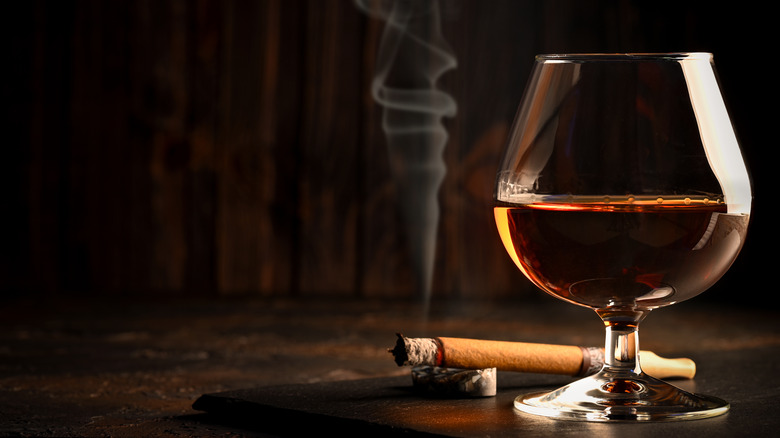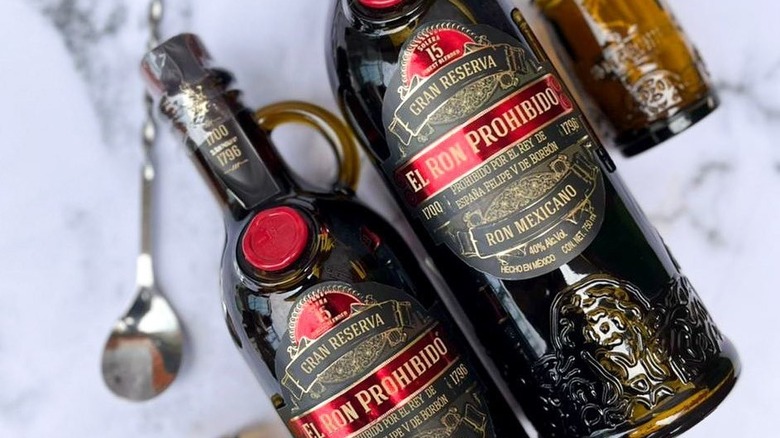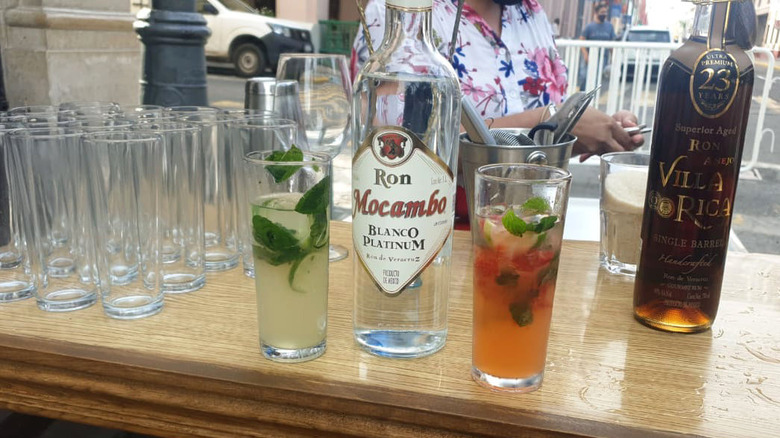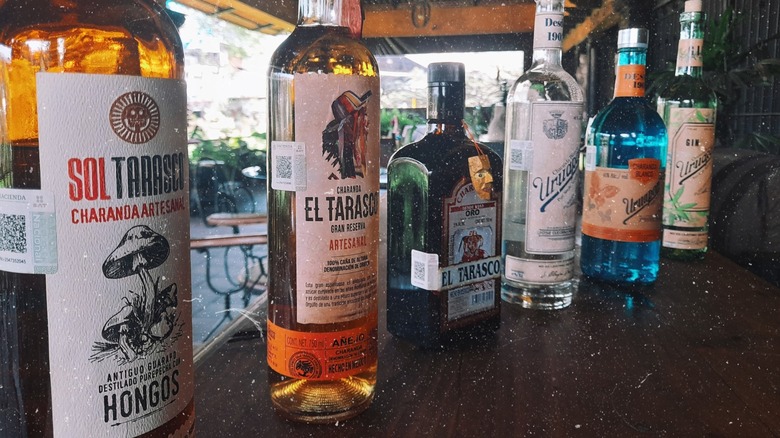The Secretive History Of Rum In Mexico
In the U.S., the prohibition of alcoholic beverages is invariably associated with the 18th amendment. But prohibitions on alcohol have also occurred elsewhere in the world, although typically not on moral grounds. More commonly, certain kinds of alcohol were banned in colonized countries to prevent competition with products being pushed by the colonizers.
That was certainly the case in India, where mahua – a flower liquor produced by the indigenous Adivasi culture — was long prohibited by the British to avoid competition with imported liquors. That native spirit has only recently begun to recover its status and popularity. A similar circumstance exists in Mexico. During the 18th century, Mexico saw its burgeoning rum industry ruined by a prohibition from Spanish colonizers. As a result, Mexican-made rum has yet to recover its status relative to other nationally produced liquors like tequila and mezcal.
Today, Mexico's rums are clearly in third place in the spirits pecking order, trailing tequila and mezcal, as well as Mexcan-produced beers and wines in terms of sales. That ranking may have been the case regardless of the Spanish prohibition, but this historical mistreatment is almost certainly why Mexican rums are not held in greater regard internationally.
Why the Spanish prohibited rum production in Mexico
The Spanish colonial era in Mexico – 1521 to 1821 – damaged the country in many ways, including severely curtailing the nascent rum industry after a ban was put in place prohibiting its production. According to Tequila Corralejo, whose Ron Prohibido rum pays tribute to this history, the prohibition began circa 1700 at the order of Spain's king, Felipe V.
The prohibition had its roots in the trade between the two countries. Spain was shipping wine to Mexico, with the barrels being refilled for the return journey with Mexican-made aguardiente de caña, a synonym for rum. The product proved popular in Spain. Too popular, as it turned out. The king viewed it as a threat and issued a ban to protect the interests of his country's liquor merchants. This prohibition drove rum production underground in Mexico. Rum itself became known as "chinguirito" and was largely reduced to small-scale production in rural kitchens, typically by women.
Because of the prohibition era, there are no centuries-old rum producers in Mexico, like Mount Gay in Barbados, which dates to 1703, or Bacardi, which opened in Cuba in 1862. Interestingly though, one of the most important steps in the recovery of the Mexican rum industry was the installation of a Bacardi distillery in 1931, the first the iconic rum brand had ever opened beyond Cuba's borders. Over 90 years later, Bacardi continues to produce rum at facilities in Mexico.
The evolution of Mexican rum post prohibition
In 1938, seven years after Bacardi opened its distillery in Mexico, one of the first important Mexican rum producers, Ron Huasteco Potosí, started production in Ciudad Valles, San Luis Potosí. Despite its facilities suffering damage from three separate hurricanes, the rum soon became extremely popular in Mexico and produced 120,000 liters per week at its height in the 1960s. Ron Huasteco Potosí was one of the first Mexican rums to achieve international distribution and to receive international recognition for its quality.
Despite another setback to the industry in the form of NAFTA – a trade agreement passed in the 1990s that allowed multinational beverage companies to get a foothold in Mexico at favorable pricing — Veracruz, in particular, has emerged as a hotbed for world-class rum. Licores Veracruz, overseen by several generations of the Villanueva family in Córdoba, Veracruz, has produced several super-premium añejo rums — notably, under the Mocambo and Villa Rica labels — that have received international awards and plaudits. Another Veracruz-produced rum, Ron La Gloria, has also established a reputation for quality, dating back to its birth in 1949.
More recently, Tequila Corralejo's Ron Prohibido, reportedly made from an old recipe that dates to the rum prohibition era in Mexico, has received acclaim for its quality. Aged twelve years in several barrels using the solera system originally invented for Spanish sherry, Ron Prohibido has unique flavor and character to go along with its fascinating backstory.
Mexico's unique charanda rums
Charanda is the most remarkable rum variation to grow out of the era of Spanish prohibition in Mexico. Michoacán, the state where charanda was born, was one of several states known to have continued producing regional liquors during the ban, although evidence for the making of charanda is not specifically present until at least 1857.
This double-distilled regional rum — whose name comes from the Purépecha word for red soil — is certainly distinctive, regardless of when it was born. It's known, for example, that sugarcane was planted in Michoacán as far back as 1550. The sugarcane is a signature element in charanda, as it is grown at higher altitudes — between 5,200 and 12,500 feet. Not only does this enhance charanda's sweetness, but it also gives it a more pronounced aroma profile.
In 2003, charanda became one of only 16 denominaciones de origen granted by the Mexican government. It's one of the few native liquors — along with tequila, mezcal, bacanora, and sotol — to receive this legal protection. By law, only 16 municipalities in Michoacan are allowed to produce charanda. Traditional producers like El Tarasco and Charanda Uruapan have the most accessible products in terms of market availability. Charanda Uruapan is also noted for its history and quality. It was founded in 1907, making it one of the oldest charanda brands and among the best.



